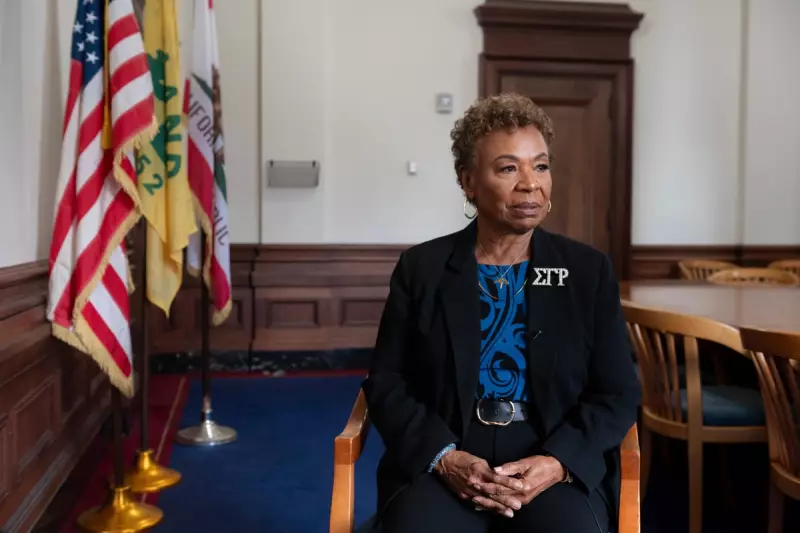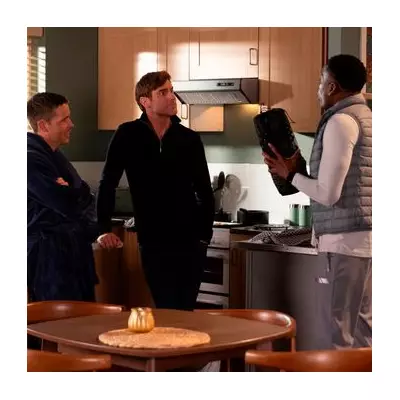
Oakland's New Mayor Faces Dual Challenge: Reducing Crime While Keeping Federal Forces at Bay
Six months into her tenure as Oakland's mayor, Barbara Lee finds herself navigating one of America's most complex urban challenges: reducing violent crime while resisting pressure for federal intervention from the Trump administration. The 79-year-old veteran politician, who previously served as a state legislator and congresswoman, now confronts these issues from the front lines of city leadership.
The human cost of Oakland's crime problem became painfully clear recently when Mayor Lee comforted friends and family of John Beam, a beloved community college football coach featured in Netflix's "Last Chance U" documentary series. Beam was shot on Laney College's athletic field at midday and died the following day, leaving a community in mourning. The alleged shooter, a 27-year-old man whose public defense attorney said was mentally ill, now faces murder and weapons charges.
A City's Struggle With Violent Crime
Oakland's crime statistics paint a sobering picture. Between 1996 and 2020, the city's homicide rate ranged from 16.2 to 36.4 violent deaths per 100,000 people, dramatically higher than the national average of approximately five per 100,000. However, recent data offers some hope: murders decreased by 32% between 2023 and 2024, while violent crimes overall dropped by 19%.
Mayor Lee attributes part of this improvement to Oakland's Department of Violence Prevention, established in 2017. The department employs "violence interrupters" - individuals who have experienced gun violence or incarceration themselves - who work to defuse conflicts before they escalate. Holly Joshi, a former Oakland police officer who now leads the department, explained that these staff members engage with community members they believe are involved in tensions that could lead to gun violence.
Yet as Tinisch Hollins, executive director of Californians for Safety and Justice, noted, statistical improvements matter less than whether residents actually feel safer in their daily lives.
Standing Against Federal Intervention
With crime rates remaining well above national averages, Oakland has been preparing for potential federal intervention similar to those seen in other American cities including Chicago, Los Angeles, and Portland. Like many of these cities, Oakland has Black mayoral and administrative leadership, which Lee believes makes them particular targets.
"We're not letting Donald Trump divide and conquer Black and brown and white people from each other," Lee stated emphatically during an interview in her downtown Oakland office. Drawing on her congressional experience from 1998 until last year, she added: "Nobody in Oakland knows Donald Trump and his playbook better than Barbara Lee. We have to push back on any effort to occupy, to send a military force here and occupy our city."
The tension escalated in August when President Trump described Oakland and Baltimore as "so far gone ... we don't even mention them anymore." Although he subsequently called off dispatching federal forces to the Bay Area after discussions with San Francisco's mayor and technology executives, the threat remains palpable.
The White House has previously rejected suggestions that Trump's expanded crime initiatives target cities based on racial demographics, but Lee remains unconvinced. She believes any federal intervention would only "create chaos" and play into what she sees as the administration's divisive strategies.
Oakland's Complex History and Future Prospects
Oakland's significance in African American history adds depth to current tensions. During the postwar boom, many Black people escaping Jim Crow laws settled in Oakland, where they found jobs, bought homes, and pursued higher education. The city became an epicenter of Black culture and activism, notably as the birthplace of the Black Panther Party for Self-Defense in 1966.
Lee, who worked with the Black Panthers in their early years, understands this legacy intimately. "So many people had misconceptions about the Black Panther Party," she reflected. "You name it, there's so many connections between today and yesterday."
Today, Oakland's population reflects considerable diversity: 30% Hispanic, 27% white, 19% Black, and 16% Asian. Residents celebrate this multiculturalism through diverse culinary scenes, outdoor activities, and community events.
Despite recent crime reductions, economic challenges persist. Several high-profile businesses have departed, including In-N-Out Burger's only Oakland location and Ayesha Curry's boutique. The city has also lost professional sports teams to Las Vegas and San Francisco.
Undeterred, Mayor Lee is determined to attract new investment, from technology companies to historically Black colleges and universities. Significant developments include a local developer's planned acquisition of the Oakland Coliseum for $125 million and Samuel Merritt University's new downtown campus set to open next year for 2,500 students.
Describing herself as "a cheerleader for Oakland," Lee remains focused on her city's future while firmly resisting what she sees as counterproductive federal intervention. When asked if she would welcome President Trump to tour Oakland's vibrant neighborhoods, her response was unequivocal: "No, thank you." Instead, she encourages the administration to support priorities like healthcare, housing, economic development, and violence prevention - the real solutions, she believes, to Oakland's challenges.





